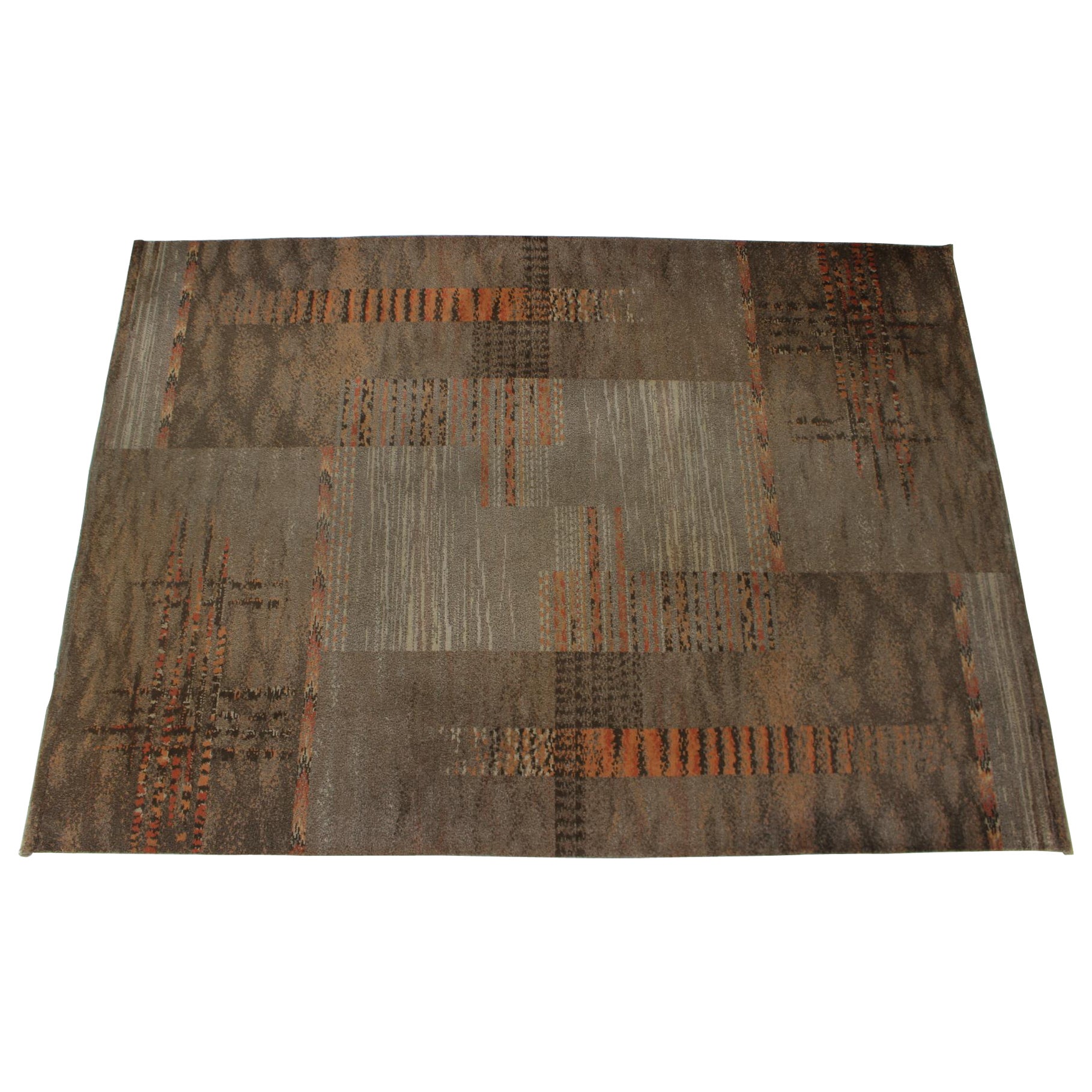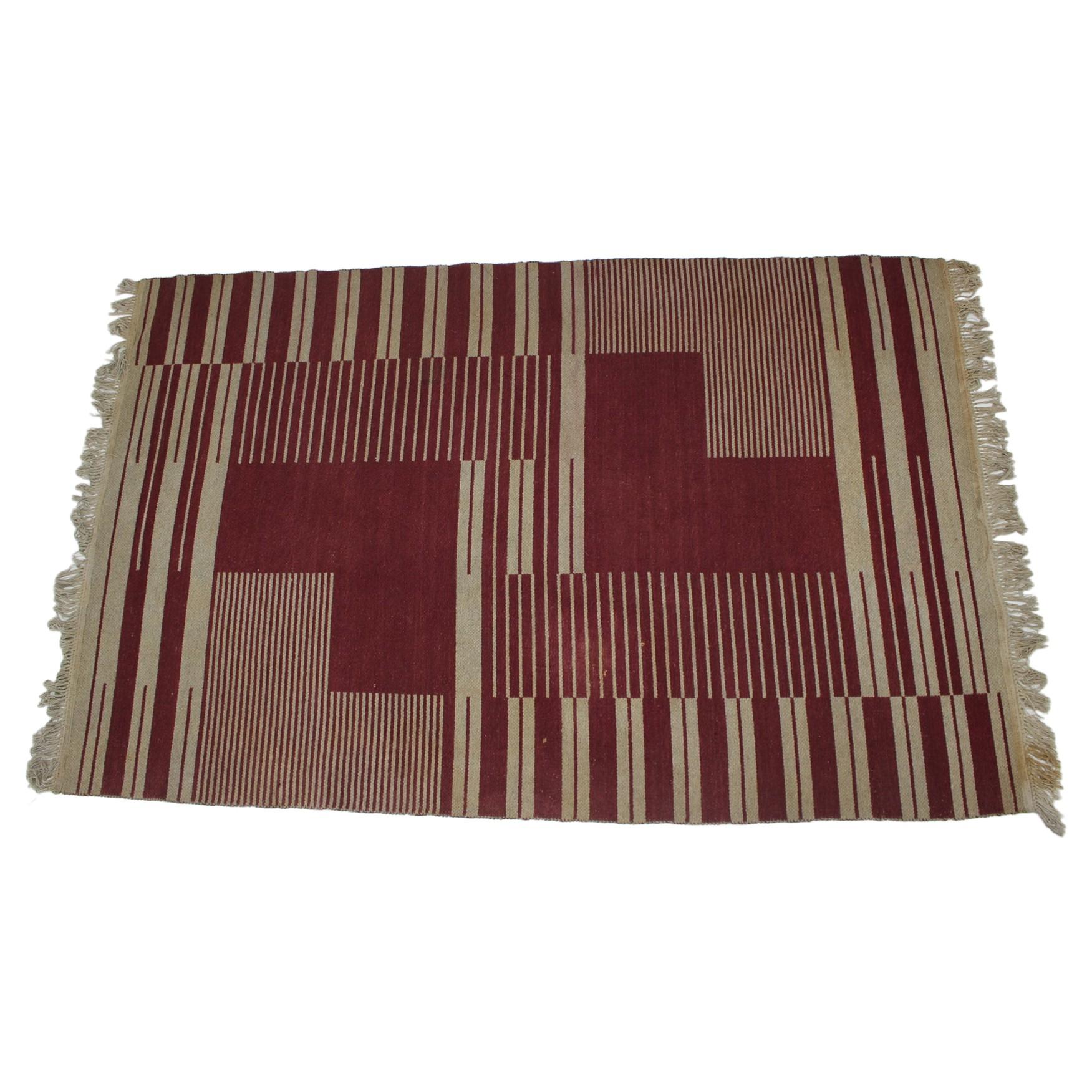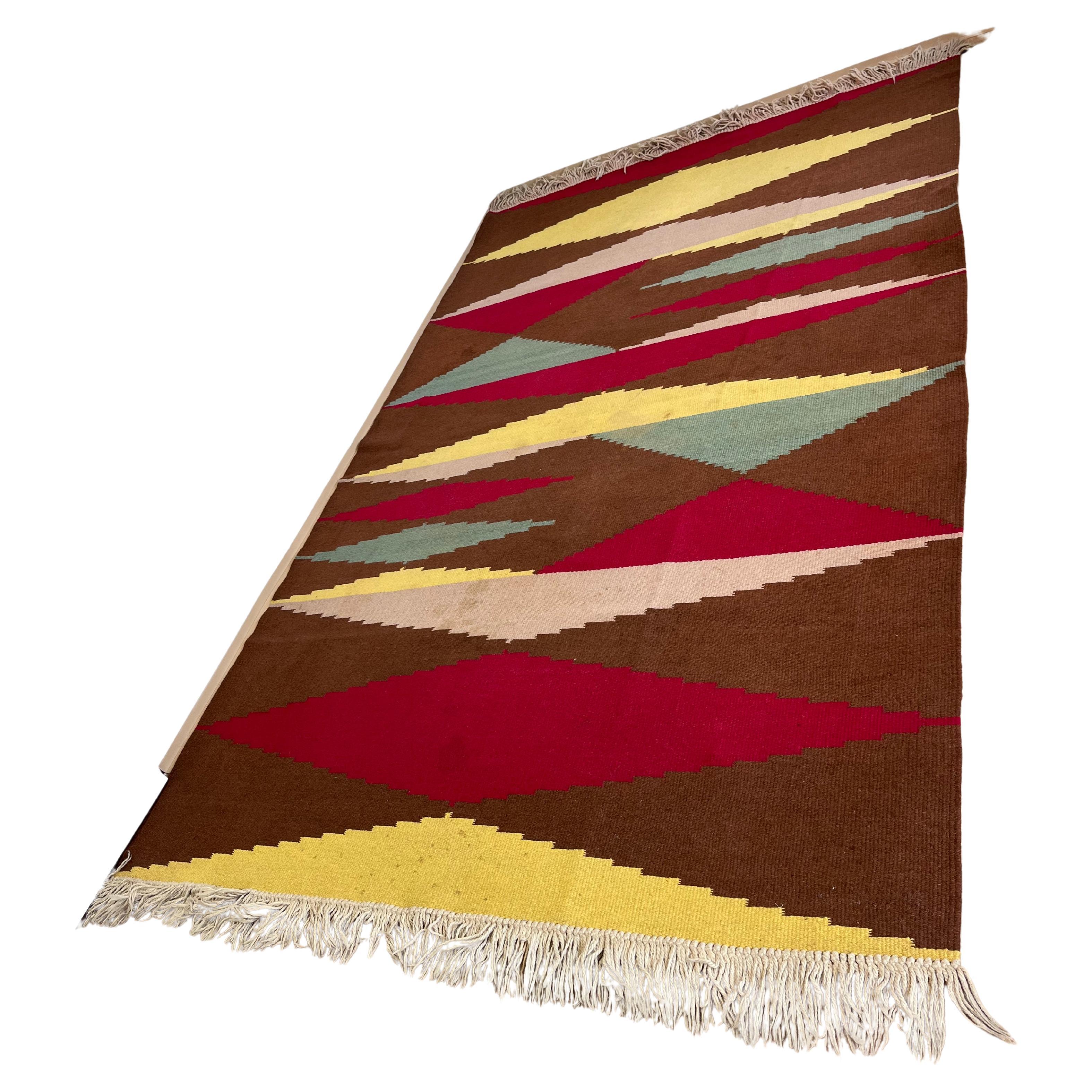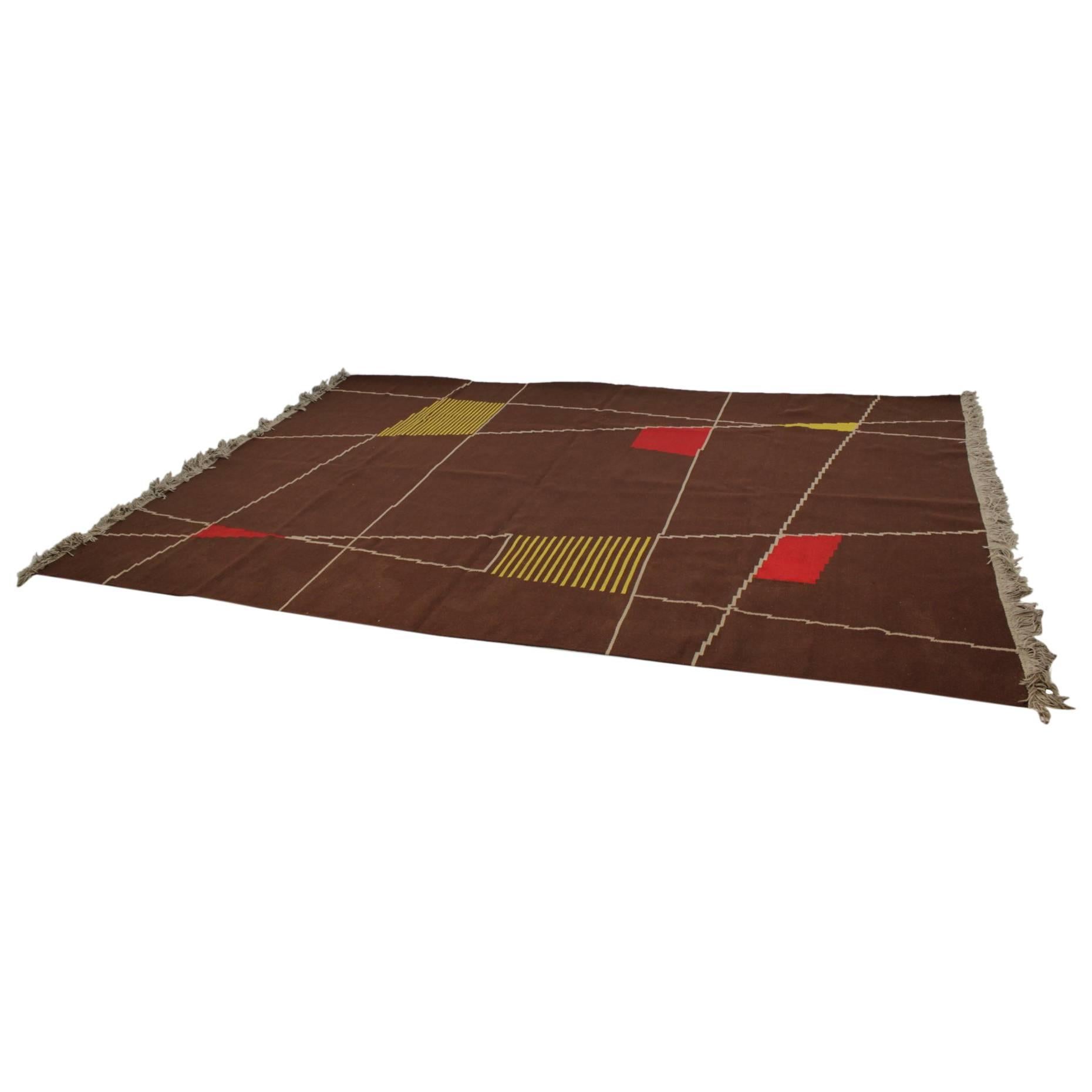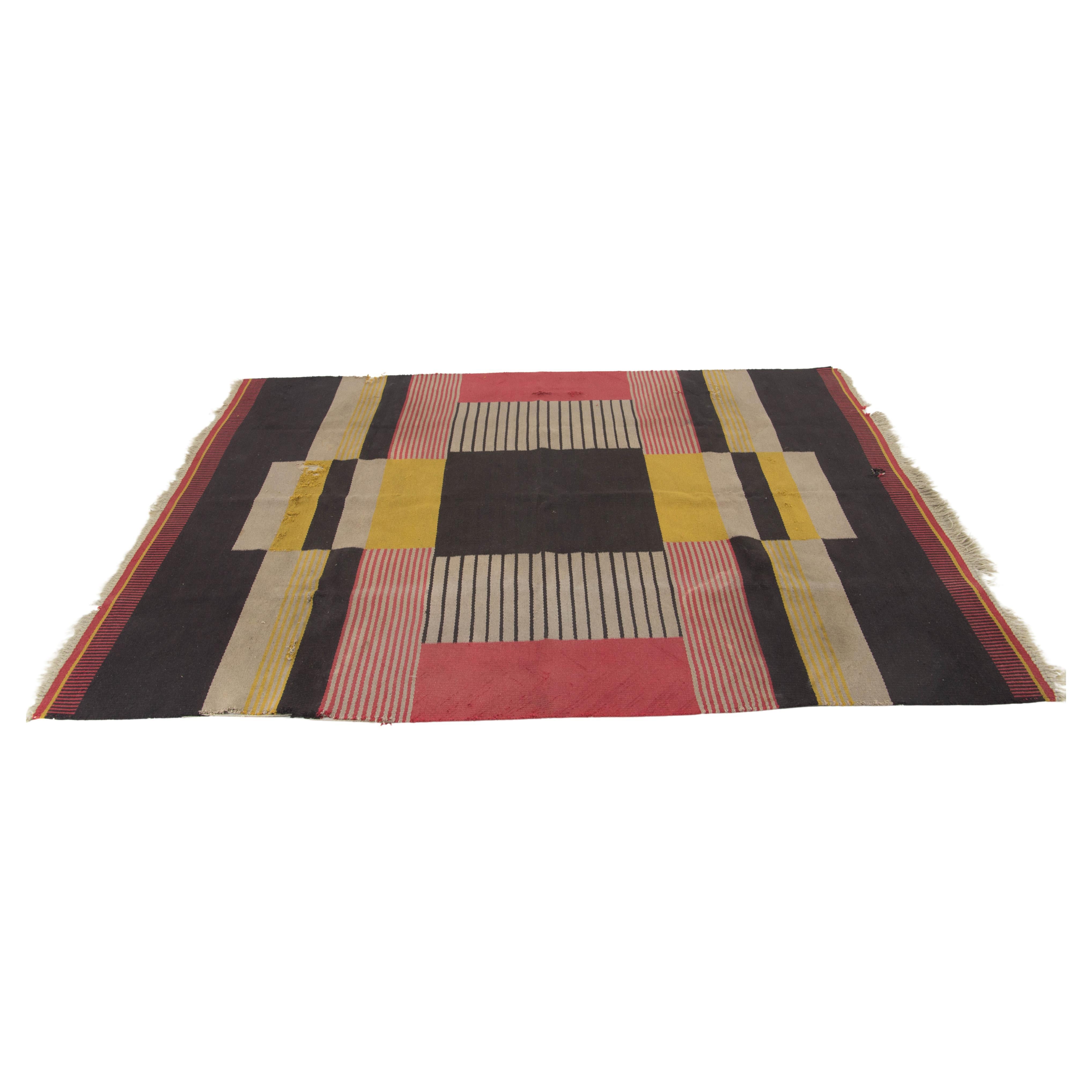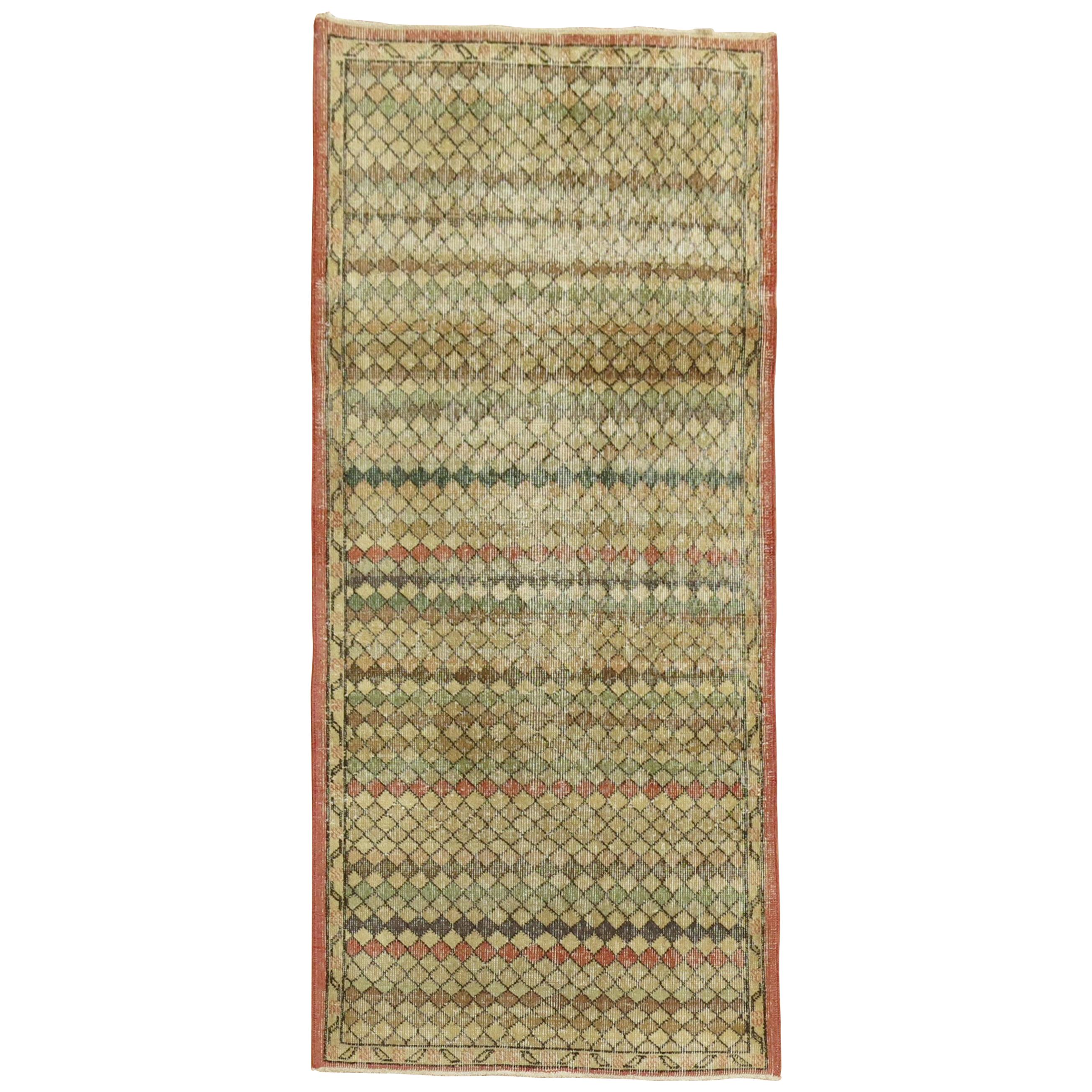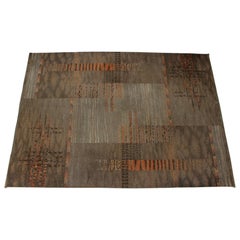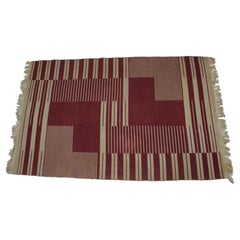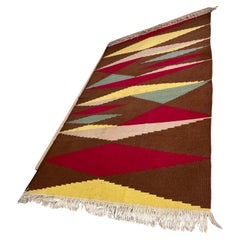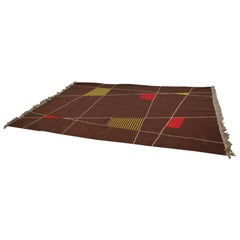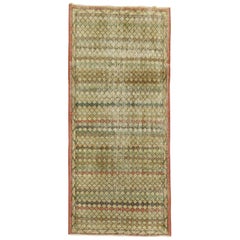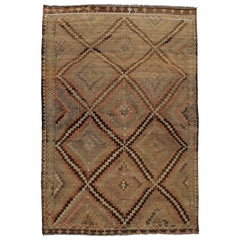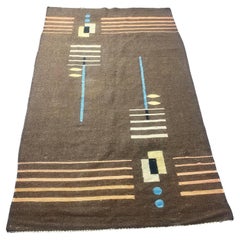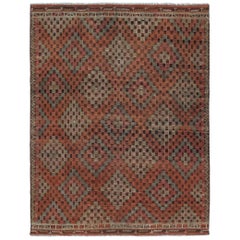Items Similar to Geometric Abstract Design Carpet / Rug, 1950s
Want more images or videos?
Request additional images or videos from the seller
1 of 14
Geometric Abstract Design Carpet / Rug, 1950s
$765.19
£566.47
€640
CA$1,058.84
A$1,167.34
CHF 610.72
MX$14,321.14
NOK 7,687.71
SEK 7,189.23
DKK 4,875.13
About the Item
- 1950s
- Czechoslovakia
- good original condition
- cleaned
- Dimensions:Width: 51.97 in (132 cm)Length: 83.47 in (212 cm)
- Style:Mid-Century Modern (Of the Period)
- Materials and Techniques:Grasscloth
- Place of Origin:Czech Republic
- Period:
- Date of Manufacture:1950
- Condition:
- Seller Location:Praha, CZ
- Reference Number:Seller: pv2881stDibs: LU2456335275142
About the Seller
4.9
Gold Seller
Premium sellers maintaining a 4.3+ rating and 24-hour response times
Established in 2012
1stDibs seller since 2016
2,923 sales on 1stDibs
Typical response time: 11 hours
- ShippingRetrieving quote...Shipping from: Litoměřice, Czech Republic
- Return Policy
Authenticity Guarantee
In the unlikely event there’s an issue with an item’s authenticity, contact us within 1 year for a full refund. DetailsMoney-Back Guarantee
If your item is not as described, is damaged in transit, or does not arrive, contact us within 7 days for a full refund. Details24-Hour Cancellation
You have a 24-hour grace period in which to reconsider your purchase, with no questions asked.Vetted Professional Sellers
Our world-class sellers must adhere to strict standards for service and quality, maintaining the integrity of our listings.Price-Match Guarantee
If you find that a seller listed the same item for a lower price elsewhere, we’ll match it.Trusted Global Delivery
Our best-in-class carrier network provides specialized shipping options worldwide, including custom delivery.More From This Seller
View AllBeautiful Geometric Abstract Design Wool Carpet / Rug, 1950s
Located in Praha, CZ
- 1950s
- Czechoslovakia
- Perfect original condition
- professionally cleansed
jt.
Category
Vintage 1950s Czech Mid-Century Modern More Carpets
Materials
Wool
$2,190 Sale Price
20% Off
Original Rare Modernist Abstract Geometric Carpet by Antonín Kybal, 1948
Located in Praha, CZ
- Czechoslovakia
- 1948
- Design: Antonín Kybal
- Publicated in books and magazines
- Very good original condition
- Professionally cleansed.
Category
Vintage 1940s Czech Mid-Century Modern More Carpets
Materials
Textile
$5,984 Sale Price
35% Off
Midcentury Kilim Abstract Wool Design Geometric Rug / Carpet, 1960s
Located in Praha, CZ
- around 1960s
- Czechoslovakia
- kilim, double sided
- original and good condition
- well preserved, cleaned, few stains
jr.
Category
Vintage 1960s Czech Mid-Century Modern More Carpets
Materials
Wool
Big Geometric Design Carpet or Rug
Located in Praha, CZ
- 1959
- Probably design of A. Kybal
- Double-sided
- Very well preserved.
Category
Vintage 1950s Mid-Century Modern More Carpets
Materials
Wool
$2,678 Sale Price
20% Off
Rare Geometric Carpet by Antonin Kybal, 1948s
By Antonín Kybal 1
Located in Praha, CZ
Rare wool carpet designed by the icon of Czech textil designer Antonin Kybal. One of the largest versions of this type.
Carpet has heavy traces of liquid and few damage places all vi...
Category
Vintage 1940s Czech Mid-Century Modern More Carpets
Materials
Wool
$1,712 Sale Price
20% Off
Czechoslovakian Geometric Rug Carpet, 1950s
Located in Praha, CZ
Extraordinary rug from Czechoslovakia, circa 1950s with geometric pattern with fringes in good original condition.
Category
Vintage 1960s Czech Mid-Century Modern More Carpets
Materials
Textile, Wool
$2,215 Sale Price
34% Off
You May Also Like
Small Pattern Turkish Deco Runner
Located in New York, NY
Turkish deco small runner with faded predominant accents in rose, brown green, circa mid-20th century.
Measures: 3'6" x 6'11".
Category
Vintage 1960s Turkish Mid-Century Modern Turkish Rugs
Materials
Wool
Vintage Midcentury Tribal Flat-Weave Rug
Located in New York, NY
These flat-weaves embody the Minimalist sophistication that emerged in the mid-20th century which continues to thrive today. We bridge the elements of the past with the present using...
Category
Vintage 1960s Turkish Tribal Turkish Rugs
Materials
Wool
Unusual Art dECO / Modernist geometric abstract rug , carpet
Located in Buffalo, NY
Unusual Art dECO / Modernist geometric abstract rug , carpet.. Stunning colors.. Great use of space, pallet..
Category
Vintage 1940s Belgian Art Deco North and South American Rugs
Materials
Wool
Vintage Mid-Century Modern Tribal Flatweave Rug
Located in New York, NY
The Mid-Century Modern collection is skillfully sourced by N A S I R I and exclusive to our showroom. These flat-weaves embody the minimalist sophistication that emerged in the mid-2...
Category
Vintage 1960s Turkish Tribal Turkish Rugs
Materials
Wool
Collectible Antique Rugs Wool Area Kilims Geometric Diamond Kilim Rug
Located in Wembley, GB
This geometric area rug is a fine wool kilim woven by hand in the 1890s. Featuring a bold diamond geometric design through the centre woven in accents of blue and brown on a subtle cream/beige background. This is then framed by a zig-zag and stripe border. Constructed with only the finest hand-spun wool and cotton. The colours come from natural dyeing techniques that have been used for generations. The construction and materials used by master weavers of this antique kilim make it a hard-wearing piece, sure to last if cared for correctly in good condition, ready for use.
Our team source only the finest interior accessories, with years of experience, let our team help you find the perfect accent pieces for your home interior. Our inventory includes a range of modern rugs, vintage rugs and antique rugs. With a huge range of colours and sizes available now.
Measures: 161 x 287cm.
MIC37
Collectible antique rugs wool...
Category
Antique 1880s Azerbaijani Mid-Century Modern Central Asian Rugs
Materials
Wool, Cotton, Organic Material
$4,188 Sale Price
20% Off
Vintage Mid-Century Tribal Flatweave Rug
Located in New York, NY
The Mid-Century Modern Collection is skillfully sourced by N A S I R I and exclusive to our showroom. These flatweaves embody the minimalist sophistication that emerged in the mid-20...
Category
Vintage 1960s Turkish Mid-Century Modern Turkish Rugs
Materials
Wool
More Ways To Browse
Marble Top Foyer Table
Regency Mahogany Side Tables
Round Dining Table Seats 10
Rounded Rosewood Dining Table
Sculptural Chair Italy
Sheffield Antique Silver Tray
Space Age Italian Chair
Sterling And Glass Decanter
Thonet Bentwood Chairs Austrian
Trolley Side Table
Victorian Walnut Side Tables
Vintage Executive Office Chair
Vintage Servant
Wood Coffee Table With Iron Base
Wood Shield
17th Century French Aubusson Tapestry
22k Gold Glasses
835 Silver
